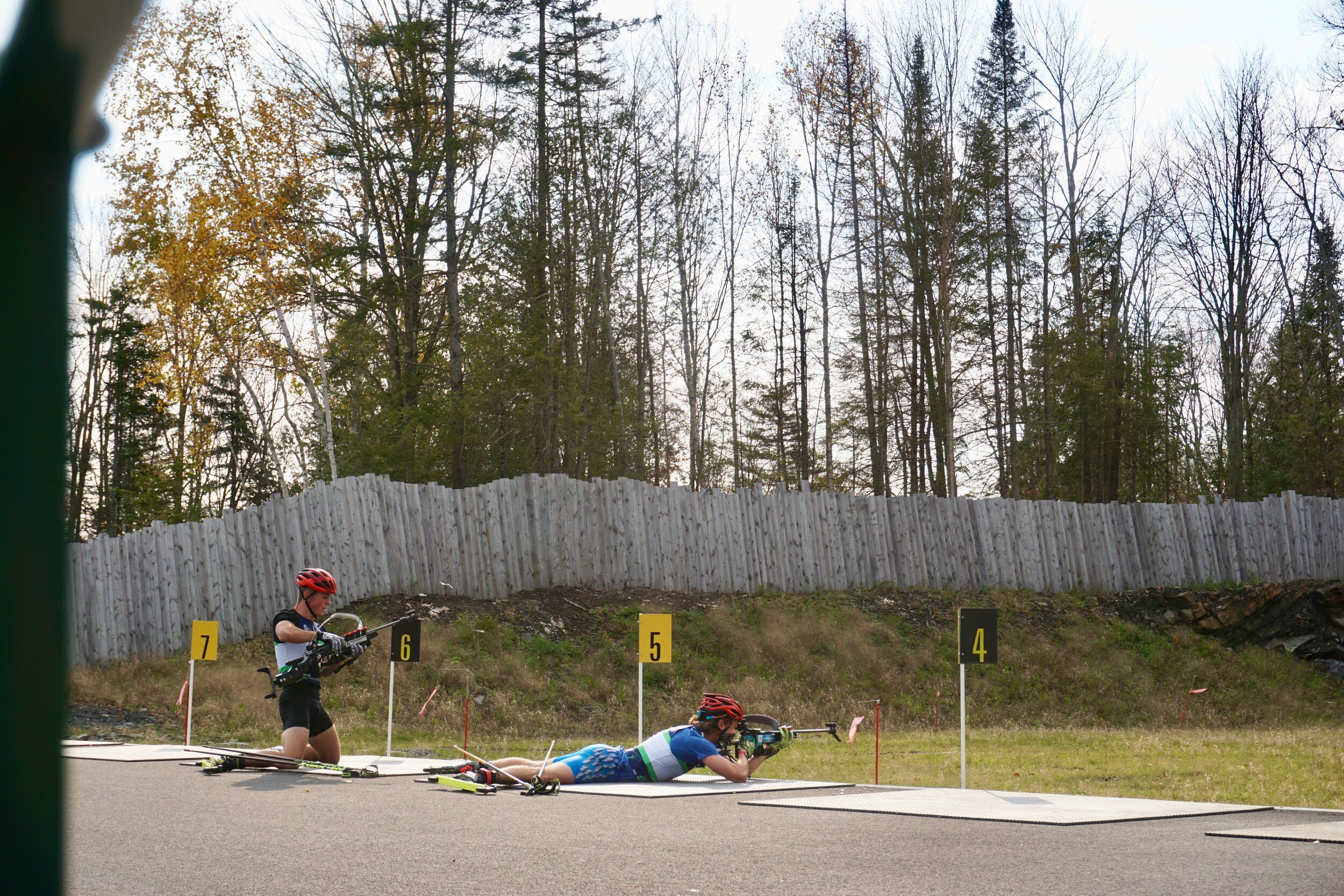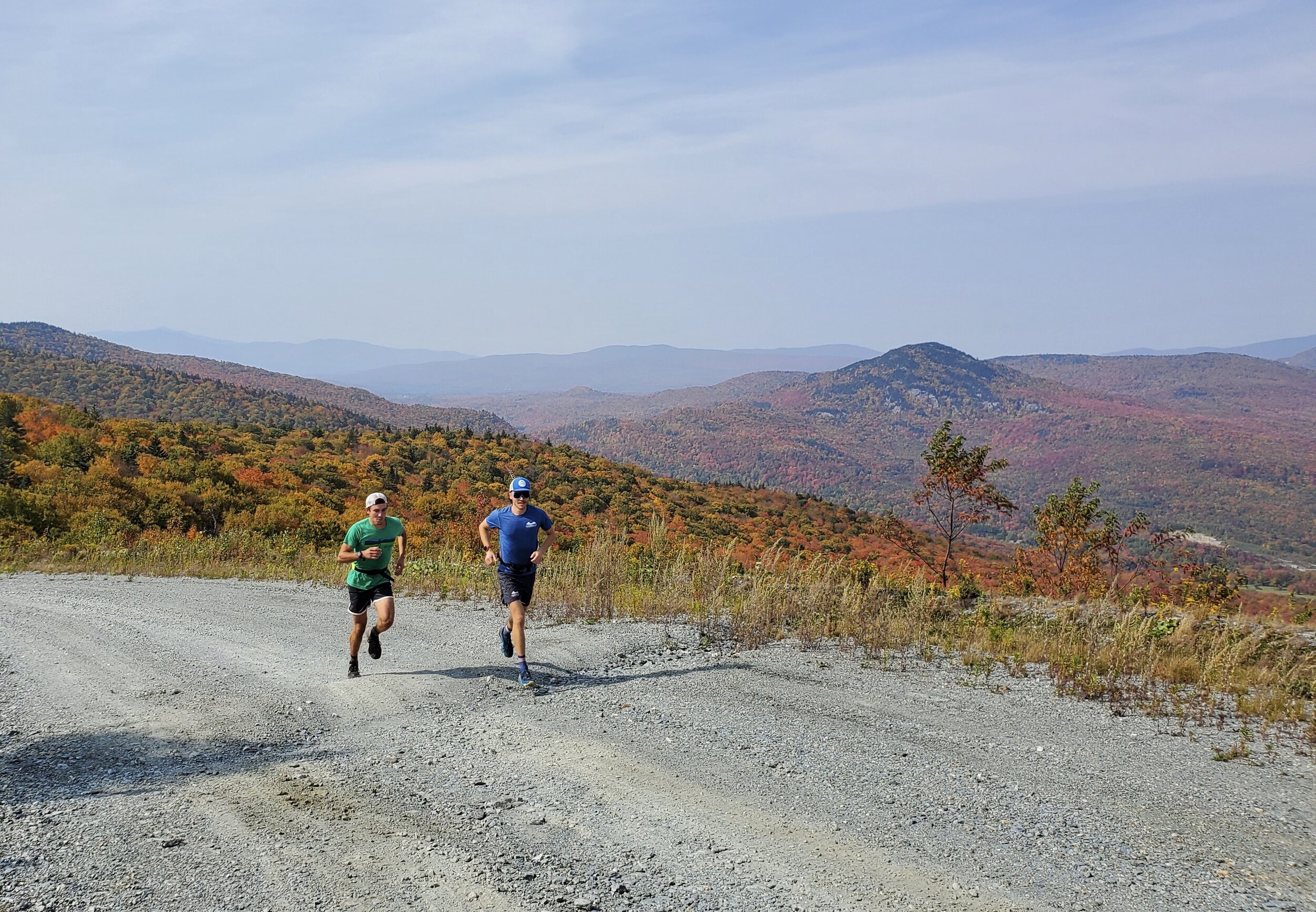Five Things I Learned at the USBA National Team Camp
Written by visiting biathlete Luke Brown of Bozeman’s Crosscut Mountain Sports Center and the USBA X-team
Over the last couple of weeks, US Biathlon Team athletes gathered at the Craftsbury Outdoor Center for what will have been the only USBA dryland camp this year. The Outdoor Center generously provided the necessary infrastructure to make this camp productive, enjoyable, and safe. With quarantine upon arrival for some, masks and social distancing for all, and an overall emphasis on health awareness, the team was able to train effectively given the current COVID-19 situation.
As a USBA X-Team member, this was my first full-on National Team Camp with the “big dogs”. It was at times nerve-wracking, at points heart-rate skyrocketing, at moments shaky-leg inducing, but throughout it all, it was educationally beneficial. To help encapsulate my experience at this fall’s camp, here are five things I learned:
Pavement Can be Beautiful
Don’t get me wrong, the dirt roads of Vermont are top notch. And yes, the foliage continuously made me want to have eyes the size of apples to take in more of the colors. But to a biathlete like me, Craftsbury’s new ribbon of blacktop winding through the woods was, indeed, beautiful. It was pretty to the eyes, but perhaps more importantly, it was extremely helpful for my biathlon development. As someone who usually has to run or bike to do combo sessions with shooting (since Bozeman does not yet have a paved roller-loop/range setup of its own), the new roller loop here gave my biathlon training a much higher level of specificity. Whether it’s actually skiing with the rifle on the back, shooting with the same sort of body fatigue as I’ll find in a race, or practicing getting on and off the mat quickly with skis on, this loop upped my game.
Shoot the Targets Before They Shoot You
That’s right. If you’re in a high pressure shooting situation, just imagine yourself in a shoot-out with the targets. Feel the pressure, get amped, and then shoot those targets down before they’ve even got a second to look at ya…. At least, that’s what one of the other biathletes at this camp told me. And I kind of like it. Hearing from more experienced biathletes about different types of mindsets they cultivate while shooting was eye-opening to me. And this was just one thing I learned from the older athletes at camp. Whether it was how to take better care of my rifle, how to recover more effectively, how to improve my ski technique, or how to dial in my rifle’s set-up, I learned a lot from the other athletes.
Frustration is the Thief of Curiosity
Wowzer, that makes you think a bit. At least it intrigued me during a conversation I had with a sports psychologist that works with the National Team. Biathlon can be a frustrating sport and we were talking about how to deal with potential frustration after a poor shooting performance. After a difficult shooting stage it can be all too easy to lose sight of process goals and fall into frustration when the actual result doesn’t come. Talking with the sports psych was a great opportunity to get professional feedback on my mental approach to shooting and performance, and it was just one of the resources I had access to during this camp that I don’t normally have. I also was able to get a body composition done by the team dietician as well as work with the team’s shooting coach - an Olympic medalist in position shooting. How to fully take advantage of each of these opportunities is something I’m still working on.
The Name on the Front of the Jersey is More Important Than the One on the Back
While I’ve heard Herb Brooks declare this truth to the players on the 1980 Miracle on Ice hockey team countless times, it never hurts to revisit this statement again. And again. Again. Again…. Making this USBA camp happen was important for the team. Many of the athletes have been training on their own and being able to come together for a camp was not only beneficial as individuals but also as a group. It was neat to deepen relationships with some biathletes who, even though we’re all technically on the US team, I don’t often train with as teammates. Racing for the USA is a privilege and developing our team culture through training sessions, shared meals, time trials, and bonfires is something I view as essential. And so would Herb.
Competitive Juices Add a Lot to the Cocktail of Success
You may not have heard this phrase, cocktail of success, because I just made it up. But if you’ve got something that’s complicated, or has a lot of parts, putting the word cocktail in front of it seems to elevate the potential meaning toward sophistication. Anyway, it takes a lot to succeed in biathlon and one of those things is performing under pressure. How do you mimic race pressure? You bring that pressure to practice. One way is through competition. Before most of our training sessions, our coach would run us through shooting drills that were heavy with intra-team competition. Whether it was partner relays, mass start range races, or single-shot shootouts, my heart would be thumping and my competitive juices sure would be flowing. Additionally, Craftsbury GRP coach Michael Gibson held what he calls “The Top Gun Challenge” for one of our workouts. He tallied points for our intro shooting competition and subtracted points for an out-of-zone lactate or missed shots during our intervals. This competitive focus evoked more of a racing mindset from us athletes.
It’s been a productive time at Craftsbury and I’m thankful that the National Team camp happened and that it happened here. The learning experience and skill progression of biathlon has been something that I truly enjoy and deeply value. As you can tell, I’m leaving this camp having learned a great deal. I probably should write it all down lest I forget.




